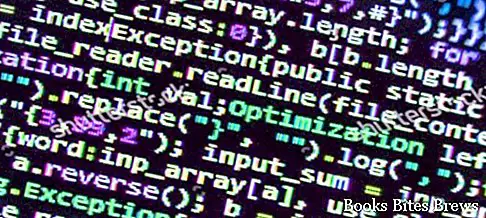What is meant by computer programming, concepts that are at the basis of a correct organization of data by the programmer who must have the ability to develop a program capable of sequencing all the operations necessary to obtain the desired result.
Basic computer programming
The term programming indicates the set of IT procedures that are used to transmit an ordered sequence of instructions to the computer in order to achieve a well-defined result.
This sequence of instructions is indicated by the term "algorithm".
The first thing an IT operator must do, who wants to set the purpose of developing a program, is to put in sequence all the logical operations necessary to achieve the desired result.
Subsequently, the program thus written must be translated into a suitable form to be understood by the computer.
The program written by the programmer is usually defined as the source program, while the program obtained after the translation process is referred to as the object program.
In order for a program to be executed from a computer it is essential that it be translated into machine code, that is to say in a succession of binary numbers, some of which are nothing more than precise instructions directed to the central processing unit, other pure data and still others memory addresses.
In computer programming, the data must be organized in easily manipulated structures, for this reason each data is assigned a name or an abbreviation that allows it to be identified.
Data that has been assigned a unique name and that maintain the same value for the whole part of the program where it was defined is called constants.
On the contrary, we call variables all those data to which, even if a unique name has been assigned, the program freely assigns different values depending on where it meets them.
A computer must not only know what a certain data is called, but it must also know what type it is in order to be able to treat it adequately in memory.
Recommended readings- Internet programs: browse and download quickly
- Check connection ping: how to test
- Computer virus: definition, pc security risks
- Video card: how to mount the pc graphic manager
- Office Programs: word processing, management
The type declaration within a data structure fixes the number of elements that compose it, allows the computer to assign them the calculation resources and the memory space necessary for a correct processing, in addition to the precise modalities concerning the way of access to the individual elements of the structure.
If the data are of the same type, for example all numbers or all letters, it is possible to create a series, called an "array", of data belonging to the same type with a single command.
Each element is assigned a certain memory location.
The whole series is called structure or record and the individual variable elements or fields.
Since the data structures are usually fixed and for this reason in many cases insufficient, it may be necessary to resort to structures of greater complexity capable of changing independently during the execution of the program itself.
In this case we speak of dynamic data structures.
Since their size and type vary over a period of time, these structures are treated by the program itself rather than by the computer, for this reason it is essential that the programmer knows in depth the use of some particular variables, called pointers, which have the task of accurately identifying a data both within the structure in which it was created and within the computer memory.
Misuse of data structures can cause instability in computer operation.




